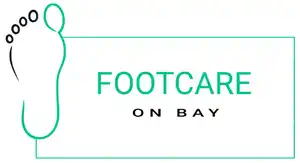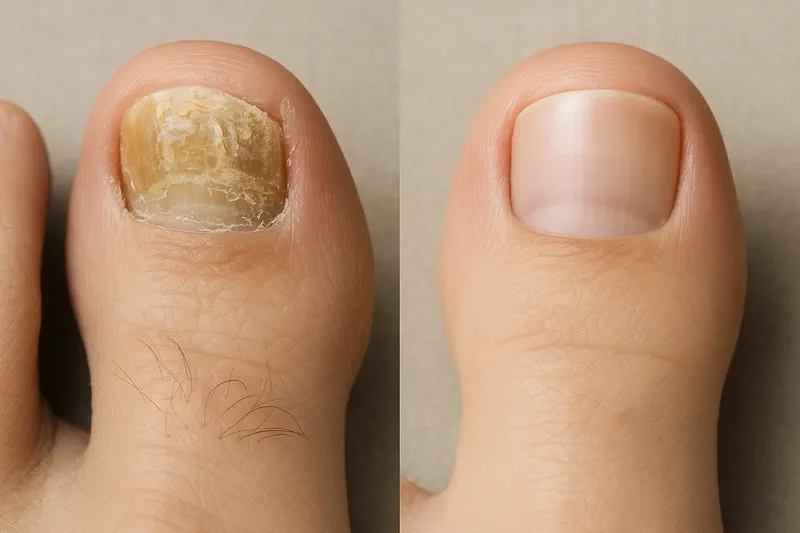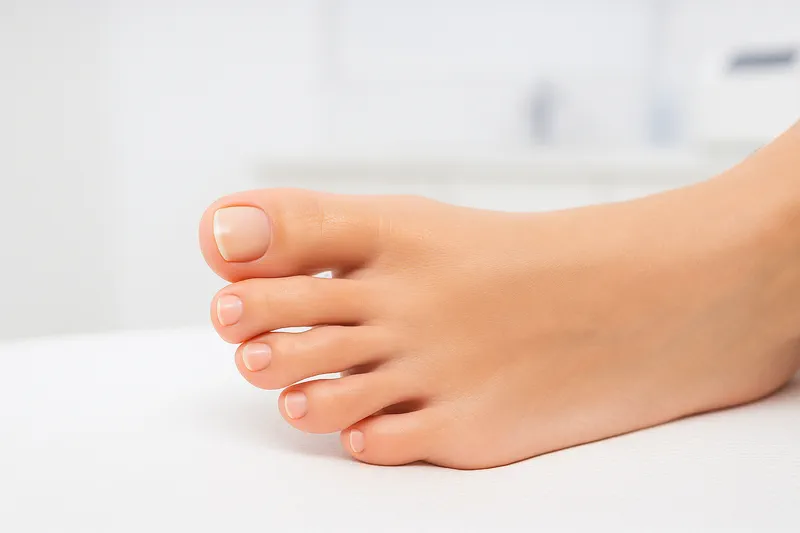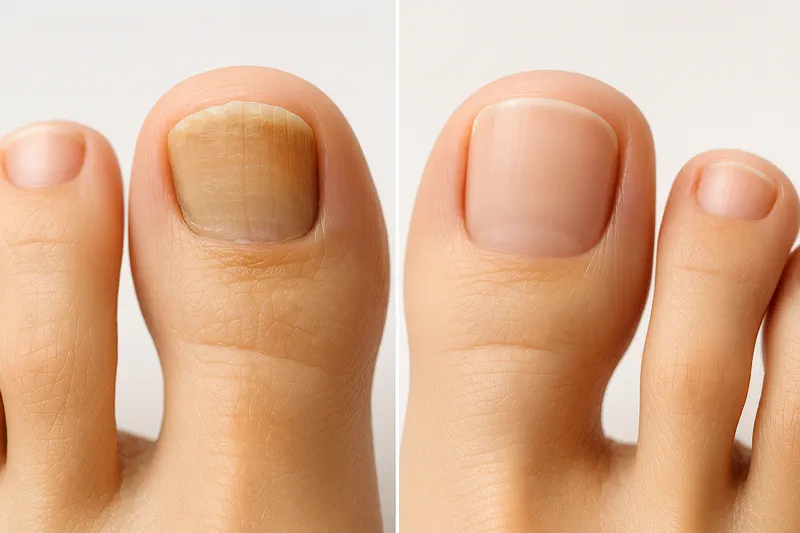LCN Wilde-Pedique, Natural Looking Repair For Damaged Toenails
Healthy nails matter for comfort and confidence. When a toenail is damaged by fungus, trauma, or structural change, treatment of the cause can take time, and the nail may still look irregular while it grows out. LCN Wilde-Pedique is a clinic procedure that improves the cosmetic look of a damaged nail right away, while allowing ongoing medical care to continue without interruption.
What is LCN Wilde-Pedique?
LCN Wilde-Pedique is an in-clinic application of a highly elastic, light-cured resin that is shaped directly on the existing nail or nail bed. The material is flexible and thin, so it moves with the toe and resists chipping. The procedure is noninvasive and typically comfortable, with no anesthesia required. The finished nail can be left natural, buffed to a matte finish, or polished.
The resin is non-porous, so it does not trap moisture. This makes it compatible with antifungal therapy and other topical or oral treatments that your clinician may prescribe for conditions like onychomycosis.
What concerns can it address?
LCN Wilde-Pedique is used to improve the appearance of nails with:
- Nail fungus changes, for example thickening, discoloration, or brittleness
- Trauma, for example cracks, partial loss, or splits after an injury
- Irregular growth patterns, for example spooning or uneven edges
- Surface defects, for example ridges or chronic splitting
- Cosmetic discoloration from various causes
It provides an immediate cosmetic option while you wait for a natural nail to grow in with treatment.
How the application works
A typical appointment follows these steps:
- Preparation, the damaged nail is trimmed and gently roughened to create a clean surface. Brittle or loose areas may be reduced.
- Bonding, a bonding agent is applied to promote adhesion between the natural nail and the resin.
- Build, the LCN Wilde-Pedique resin is layered and sculpted to the desired nail shape.
- Cure, each layer is light-cured to set the material.
- Seal and finish, a topcoat is applied for durability and water resistance, then the surface is shaped and polished to the requested look.
Patients can wear normal footwear right away, and nail polish can be applied and removed without harming the restored nail.
LCN Wilde-Pedique compared with salon acrylics:
- Flexibility, salon acrylics are rigid and can stress the nail bed, LCN Wilde-Pedique is flexible and designed to move with the toe.
- Chemistry, many acrylic systems use harsh primers or glues that can irritate skin, LCN Wilde-Pedique is a highly elastic UV sculpting gel with AM-factor and microcrystalline silver that adjusts optimally to the movements of feet. WILDE-PEDIDQUE silver plus reduces verifiably the germ load. In addition, the antimycotic active ingredient can prevent nail infections.
- Moisture handling, acrylics are typically porous and can trap moisture, LCN Wilde-Pedique is non-porous which helps avoid creating a damp environment on the nail surface.
- Care pathway, LCN Wilde-Pedique is intended to be used alongside medical care, so it is suitable for people who are already being treated for nail disease.
Formulation notes
The LCN Wilde-Pedique system uses a light-cured resin and dedicated bonders and sealants. The formulation is designed for clinical use. Many clinics note that the system includes piroctone olamine, an antifungal ingredient, and colloidal silver, an antimicrobial ingredient.
These components support a clean nail surface environment. They are not a substitute for medical treatment of an active infection.
Who is a good candidate
LCN Wilde-Pedique is well-suited for people who:
- Want cosmetic improvement while they complete antifungal or other nail treatment
- Have nails altered by trauma or congenital shape differences
- Experience persistent splitting, ridging, or thinning
- Prefer a clinical alternative to salon artificial nails
A brief assessment with a chiropodist or other qualified medical provider is recommended before treatment.
When LCN Wilde-Pedique is not appropriate
LCN Wilde-Pedique is generally not used when there is:
- Active, painful nail infection or significant inflammation
- Ingrown toenails requiring a procedural fix
- Periungual warts in the treatment area
- Severe circulatory compromise in the toes
Your clinician will advise on timing and any preparatory care if one of these applies.
Longevity and maintenance
The LCN Wilde-Pedique nail grows out with the natural nail. Most people return for periodic maintenance as the underlying nail advances, at which point the material can be thinned, reshaped, or reapplied.
Standard nail polish can be used, and common removers do not damage the resin. Basic home care, for example keeping the nail dry after bathing and avoiding aggressive picking, helps the result last.
Use in clinical care
Many chiropody and dermatology clinics include LCN Wilde-Pedique as part of a broader plan. The immediate cosmetic improvement often makes it easier for patients to stay consistent with prescribed antifungal or nail-health routines, since they are less self-conscious about their nails during the healing period.
What LCN Wilde-Pedique can and cannot do
-
Can do, provide a natural-looking cosmetic nail that protects the nail surface, allows you to continue antifungal or other treatments, and improves comfort in shoes.
-
Cannot do, cure a nail infection by itself or replace medical treatment for conditions that require it.
Summary
LCN Wilde-Pedique is a clinic-applied, flexible, non-porous resin nail that restores a healthy look to damaged toenails while medical care continues in the background. It is designed for use on real toes, it avoids the common drawbacks of salon acrylics, and it gives patients an immediate, natural appearance as the underlying nail grows out.
For best results, don’t hesitate to contact us for expert guidance



